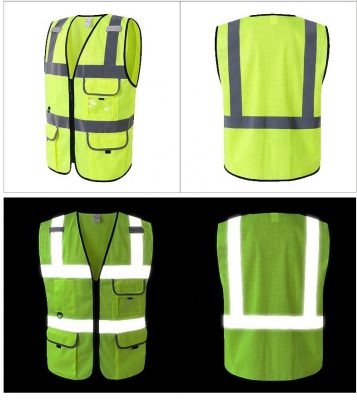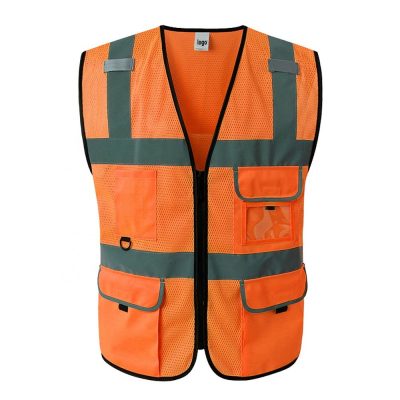Reflective raincoat is a kind of rainy weather waterproof rain gear that is common in daily life. It can not only prevent your body from getting wet from heavy rain, but also prevent unnecessary traffic accidents due to poor road conditions in rainy days, especially for people who drive. It is difficult to distinguish the situation ahead, so a reflective strip is added to the raincoat, so that it has a reflective effect and reminds someone in front of you. How does the reflective function of the raincoat come true?
First of all, in terms of fabrics, raincoats are made of high-density fabrics and coated fabrics. High-density fabrics are usually woven from finer chemical fiber yarns with very high density. In addition to the non-water absorption of chemical fiber yarns, high-density fabrics are impermeable to water.
The umbrellas we often use and some basic raincoats are made of high-density fabrics. Of course, this impermeability is also limited to small and medium rainfall for a period of time. For example, if it is a long-term heavy rain environment, the umbrella will still leak.
At this time, we need to use another fabric: coated fabric.
To be precise, a coated fabric is a fabric treated with a special process, with two or even multiple layers.
It is to use solvent or water to dissolve the required coating particles (including PU glue, A/C glue, PVC, PE glue) into a salivation shape, and then use a certain method (cylinder, scraper or roller) to evenly dissolve it. Coated on the fabric (with cotton, polyester, nylon and other substrates), and then fixed at the temperature in the oven, so that a uniform layer of covering rubber is formed on the surface of the fabric, so as to achieve waterproof, windproof, breathable and other functions
The principle of this is actually very simple, but the operation is the key! It is to use solvent (now fabric factories generally use toluene or methyl ethyl ketone) to coat the required rubber particles (PU glue, A/C glue, PVC, PE glue) Dissolve into salivation (related to the ratio of rubber and sol, viscosity, etc.) and then apply a scraper uniformly on the cloth (with cotton, polyester, nylon and other substrates), and then pass the temperature in the oven The fixation, so that a uniform layer of covering rubber is formed on the surface of the fabric, so as to achieve the functions of waterproof, windproof, and vapor permeable!
Coated fabrics or fabrics generally have a higher improvement in yarn splitting. These coated fabrics are used in down jacket fabrics, ski wear fabrics, work protective clothing fabrics, outdoor sportswear fabrics, etc.
And if we want the raincoat to have both rainproof and protective functions in the rain, we need to add another thing to the original raincoat: reflective material, usually reflective tape and lattice tape, or reflective paint.






















